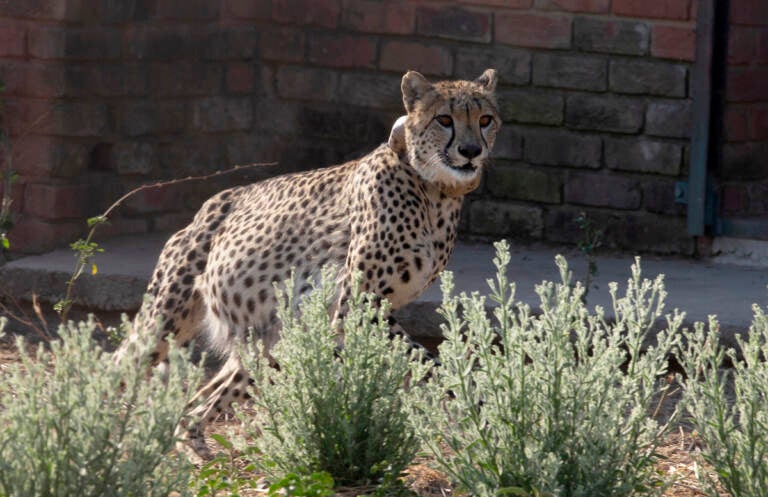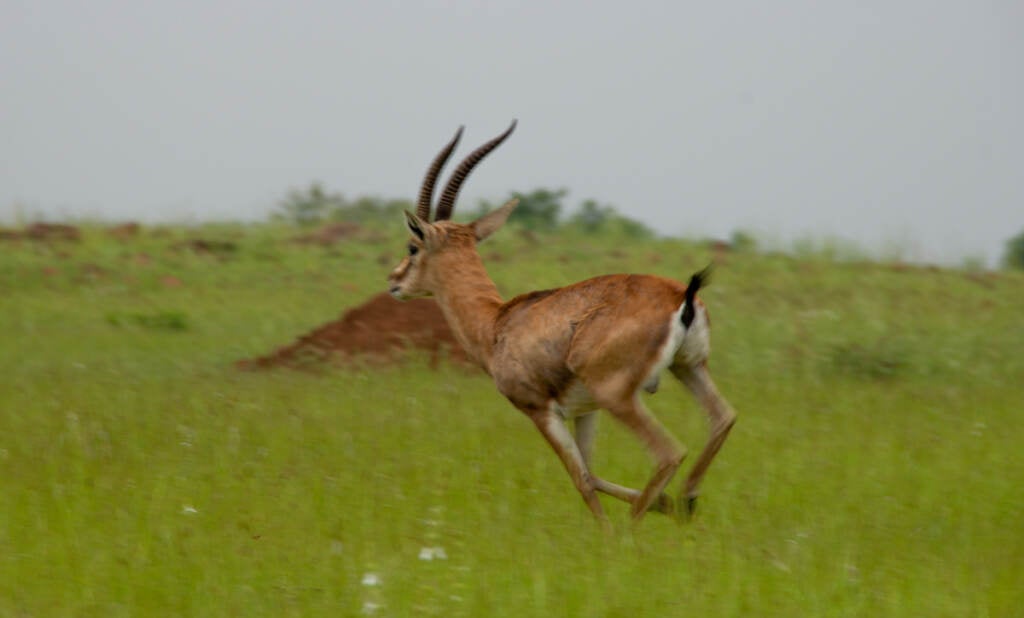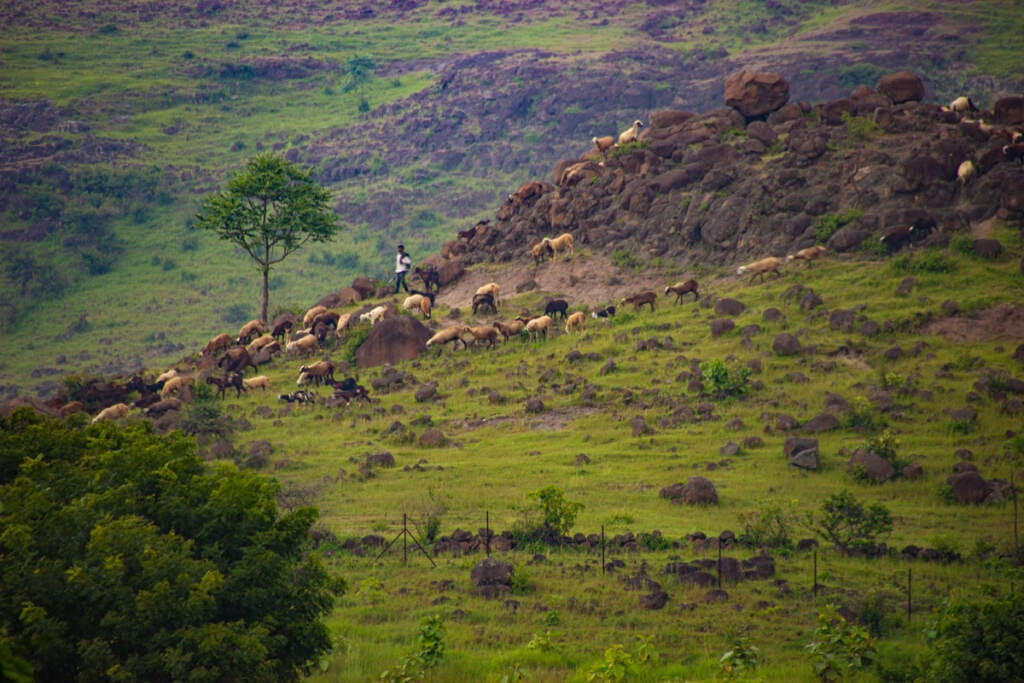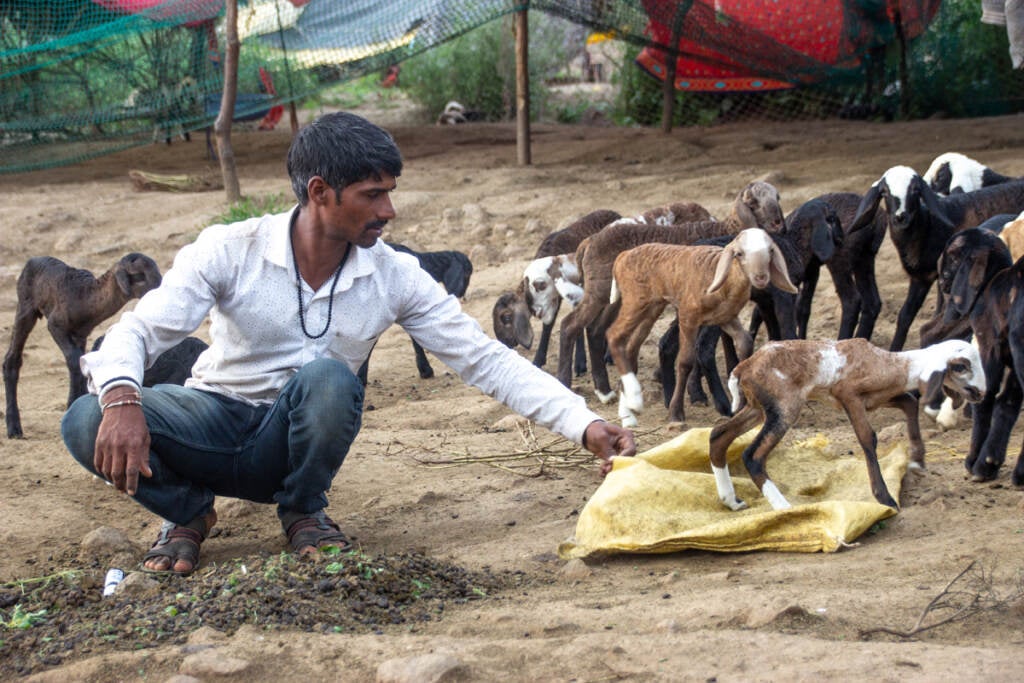Can the cheetah help save India’s grasslands?
Cheetahs were declared extinct 70 years ago in India. Ecologists hope its reintroduction will boost efforts to preserve the country's vast grasslands.
Listen 10:41
A cheetah runs inside a quarantine section before being relocated to India. (AP Photo/Denis Farrell)
This story is from The Pulse, a weekly health and science podcast.
Find it on Apple Podcasts, Spotify, or wherever you get your podcasts.
In 1952, cheetahs were officially declared extinct in India. Due to human action in the form of sustained habitat loss and hunting, the fastest land mammal on earth disappeared from the country. Though India is home to numerous other large predators – like tigers, lions, and leopards – the loss of the cheetah was considered a blow to national pride. This was because cheetahs are the only large carnivore to become extinct since the country’s independence.
India has spent decades trying to bring cheetahs back. Last month, the effort paid off. Eight cheetahs were loaded into a cargo plane from Namibia in southwestern Africa and flown to India to be released.
M.K. Ranjitsinh was India’s first Director of Wildlife Preservation, and he had been trying to bring the cheetah back since the early 1970s. He made the case that reintroducing cheetahs to India could help more than the cheetah. It could help save the species’ habitat as well – revitalizing the entire ecosystem and drawing attention to the country’s essential yet under-appreciated grasslands.
However, despite numerous attempts, “Project Cheetah” continued to fail because of immense scientific, legal, and logistical challenges.
“You do not know the kinds of setbacks I’ve had,” Ranjitsinh said. “It was as if it was jinxed. Literally, I believed it was jinxed.”
Reintroduction proponents like Ranjitsinh argued that African cheetahs were genetically similar enough to the Asiatic variety that once lived in India to successfully thrive in the country. In 2013, the Indian Supreme Court disagreed — effectively blocking their efforts by ruling that African cheetahs were too genetically distinct from Asiatic cheetahs to enter India.
But then, after years of work by Indian and international cheetah experts, the court agreed to allow a pilot project to move forward in 2020.
On September 17, Ranjitsinh was there to see eight cheetahs released into Kuno National Park in the state of Madhya Pradhesh.
“I’m not ashamed to say, but I cried. I wept. And so did one or two others who were with me. And we hugged each other. Like children.”
With more cheetahs slated to arrive in India in coming years, Ranjitsinh hopes that cheetahs can act as a symbol for its grasslands, as well as its grassland-forest mosaics. In India, millions of people rely on grasslands to graze their livestock. And this habitat plays a key role in trapping carbon, which is important for managing climate change.
Grasslands are also home to hundreds of other types of plants and animals. By saving grasslands, some conservationists hope to save a host of less flashy species that depend on the habitat. For example, the Four Horned Antelope.
“It is on the verge of extinction,” Ranjitsinh said. “And it’s the ideal prey for a cheetah.”
Subscribe to The Pulse
But not everyone believes cheetahs are essential for saving India’s grasslands. Some argue that it is more important to change how grasslands are viewed.
Currently, large sections of grassland are officially classified by the government as “wastelands” in its Wasteland Atlas of India.
“It doesn’t require cheetahs from Africa for us to change that categorization,” said Ravi Chellam, a wildlife biologist.
When land is classified as “wasteland,” it becomes easier for developers to gain permission to build large infrastructure projects there. Chellam makes the point that grasslands should be recognized as a valuable ecosystem, essential for people, plants, and animals.
“The ecologist in me bristles at the term wasteland. Land is wasted by human action. By nature, no land is a wasteland,” Chellam said.
Additionally, there are numerous species that already live and thrive in the grasslands. By focusing only on the so-called ‘charismatic’ species like cheetahs, he says there is a risk of running a sort of beauty contest with the natural world.

Other experts agree with that point of view, like animal ecologist Abi Vanak. He points to other valuable grassland predators that get sidelined because of personal biases.
“In other countries the wolf is seen as an important predator of the landscape,” Vanak said. “And [in India] we have wolves everywhere, and yet because we have larger predators like the tiger and the leopard, the wolves have been ignored. But the wolves are the true kings of the savannah ecosystems.”
Like wolves in Europe and North America, the Indian wolf is a striking predator, but it is noticeably smaller and leaner than wolves in the West. Small packs of them roam the grasslands on the outskirts of Pune – a city in India’s western state of Maharashtra, three hours from Mumbai.
In Pune, a group called the Grasslands Trust works with the state Forest Department to identify and restore these habitats. The group’s founder, Mihir Godbole, also collaborates with local communities on this mission and stresses three key points about the value of grasslands: “First is biodiversity, which is here right now. The second is livelihoods. And third and most important right now, carbon sequestration.”
In essence, Godbole says the grasslands are important for a plethora of animal and plant species, as well as for the shepherds, whose livestock graze on these open fields. Additionally, research shows that grasslands store a large amount of carbon below ground, protecting the atmosphere from this harmful greenhouse gas.
Unfortunately, Godbole says, the grasslands and the species that depend on them are under serious threat. As the city limits continue to expand, these open spaces are disappearing, putting a strain on wolves, hyenas, and other animals regularly seen here.
Also facing new challenges is the Dhangar Community – nomadic herders who have traveled with their sheep and goats across these plains for generations. These shepherds say growing up, their lives were replete with the beauty of their natural surroundings. But in the past decade, everything has changed, and grasslands are quickly being replaced with development projects.

“There were acres and acres of open plains. No barbed wire fences, no walled compound. Nothing of that sort was there,” said Sathish, a young herder who travels through the state of Maharashtra with his brother, Sampath and their families.
Today, however, their sheep have limited grass to graze, and they sometimes eat discarded plastic or drink from polluted streams. Due to urbanization, Satish wonders whether generations after him will be able to make a living as shepherds.
“At times, I am troubled by the thought that our traditional business of sheep rearing is now coming to an end. Is there no future for us?”

As grasslands disappear, the people and animals who depend on them are struggling.
This is true in the lush, post-monsoon grasslands of Pune, as well as the dry grasslands of a state called Rajasthan, where the western edges of the state are made up of scrubland, rolling sand dunes, and desert plains.
Here, shepherds and desert grassland species have watched as their once wide-open terrain disappears under acres of solar panels. In the past ten years, Rajasthan has become India’s leader in solar energy capacity. While this is good news for tackling the existential dangers of climate change, these largescale renewable energy projects now act as the largest threat for a critically endangered bird called the Great Indian Bustard.
Less than 150 of these birds remain in the wild, and experts say that these large, brown, and white birds are dying off due to collisions with transmission lines – many of which are carrying wind and solar energy to other parts of the state. Additionally, fields of grasslands are now home to new solar and wind farms.
These grasslands are often viewed as the most convenient place to build new development projects. But as urbanization accelerates across India and grasslands disappear, so are its native flora and fauna, as well as its shepherds and farmers who have depended on the land for hundreds of years.
The environmentalists who championed the reintroduction of the cheetah hope that bringing iconic species back to the country will be more than a symbolic step in terms of saving these ecosystems.
“A cheetah is a means to an end. It’s not an end in itself,” said M.K. Ranjitsinh, who played a key role in helping cheetahs return to India.
Reintroduction, then, may be a catalyst for helping draw resources and attention to the nation’s grasslands. He adds: “the real work of rehabilitation and restoration and reintroduction starts now.”
WHYY is your source for fact-based, in-depth journalism and information. As a nonprofit organization, we rely on financial support from readers like you. Please give today.






